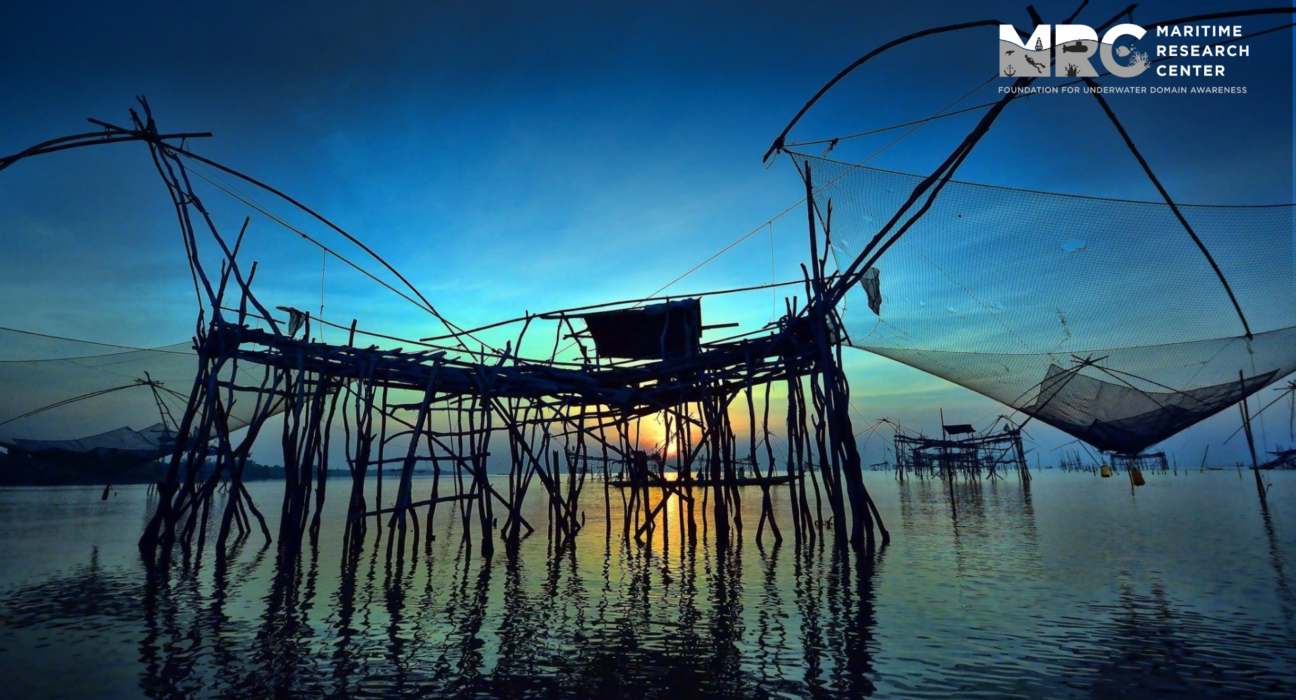- Anthropocentric or Human centric paradigm involves alignment of the humans at the center of economic, social and environmental considerations
- G20 summit (hosted by India) outcomes suggest the growth of Blue economy along the lines of human centric development, to support livelihood opportunities
- Aquaculture is a great way to increase the penetration of blue economy in rural areas, and there are already many initiatives and schemes launched by the government from 2020 including PMMSY, KCC and the “SagarParikrama” initiative
- Aquaculture is a great way to increase the penetration of blue economy in rural areas, and there are already many initiatives and schemes launched by the government from 2020 including PMMSY, KCC and the “SagarParikrama” initiative
- In this article, we examine the methods needed to apply this human-centric paradigm to aquaculture in India.
Aquaculture to achieve Anthropocentric development
The Anthropocentric Paradigm offers a revolutionary framework for aquaculture that is focused on the prosperity and well-being of persons and communities. The Indian government can advance this crucial industry by acknowledging that human-centric initiatives are essential for sustainable development in aquaculture.
The government can make investments in aquaculture-specific training programmes, technical colleges, and research facilities. There are existing research organizations like Central Institute for Brackishwater Aquaculture (CIBA), National Fisheries Development Board (NFDB), Central Marine and Fisheries Research Institute (CMFRI) working towards providing adequate research support to the aquaculture advancement in the country. They release crucial information in forms of journals and articles to demonstrate the ways to optimize the yields from the fisheries farms.
This gives people the skills they need to advance innovation and productivity in the industry, increasing livelihoods and enhancing the sector’s contribution to the economy in the process.
Providing Access to Healthcare and Promoting Well-Being
A healthy and effective staff is essential for a thriving aquaculture industry. Accessible healthcare services, such as routine physicals, immunisations, and specialized treatment for workplace dangers, should be a government priority.
The government can guarantee a healthy farmers workforce that successfully supports the expansion of the aquaculture industry by attending to the health needs of individuals working in the industry.

Fostering livelihoods and entrepreneurship
A key component of an anthropocentric approach to aquaculture development is encouraging entrepreneurship and developing sustainable livelihoods (It is a main aim of the Indian government to appreciate aquaculture development under UN-SDGs, openly mentioned in the government’s PIB release documents). By providing financial assistance, mentorship programmes, and simplified licensing procedures for aquaculture businesses, the government may promote an environment that is favorable to economic growth. This gives people the freedom to start their own businesses, strengthen local economies, and lessen their reliance on conventional employment patterns.
Access to Social Safety Nets on an Equal Basis
Creating extensive social safety nets is a key component of human-centric growth in aquaculture. Access to insurance protection, and focused subsidies for necessary inputs should all be part of these safety nets. Such safeguards ensure that aquaculture workers are not disproportionately burdened by unforeseen difficulties or economic swings, protecting their welfare and means of subsistence.
Including Everyone and Giving Marginalized Communities Power
An anthropocentric strategy for Indian aquaculture places a strong emphasis on promoting inclusion. While India is a diverse country, we strongly believe that every community resides in harmony, it is important to not overlook this fact directly. The government should take aggressive steps to remove obstacles that prevent marginalized groups, including women and tribal populations, from taking part in aquaculture activities. A welcoming atmosphere that promotes diversity and develops the industry requires customized training programmes, access to financing facilities, and providing fair access to resources.
Resilience to climate change and environmental sustainability
Aquaculture that is anthropocentric must have a strong commitment to environmental sustainability. The government can put in place regulations that support ethical resource management, environmentally sound aquaculture methods, and conservation initiatives. The sector may reduce risks connected with climate change and guarantee long-term viability by investing in climate-resilient technologies and offering training on adaptation techniques. I would like to mention that the APY tool is being built to solve this very problem with a vision to integrate a lot more features to build a realtime farm monitoring system. Farm monitoring systems have been proven a lot efficient in western countries like the US to enhance productivity.
Feasibility Study
While the initiative for aquaculture expansion looks very promising to support rural development, the feasibility study is very important to understand the practicality of its implementation.
Let us understand the parameters involved in this study in the context of Aquaculture expansion:
Risk Assessment
It identifies potential risks, challenges, and uncertainties associated with the framework. This allows for proactive risk mitigation strategies to be put in place. In terms of aquaculture expansion, the major risk is the maintenance and enforcement of quality standards. The rapid expansion can lead to subtle
Resource Allocation
A feasibility study helps in understanding the resources, including financial, human, and technological, that will be required for successful implementation. This ensures that resources are allocated efficiently and effectively. In rural areas, it may create tensions within the community based on the land/water usage by the aquaculture farmers (could potentially harm the natural ecosystem), which may upset other people of the community.
Objective Decision-Making
It provides an evidence-based foundation for decision-making. This prevents the pursuit of initiatives that may be impractical or unviable in the given context. In terms of Shrimp Aquaculture, many theories and statistics suggest that a rapid expansion led to the destruction of the associated mangroves, flora/fauna and habitats. As supported by evidence, the expansion may see a disagreement from the climate and nature activists (in terms of protests in the worst case scenario).
Market Analysis
In commercial frameworks, a feasibility study evaluates the market demand, competition, and potential customer base. This information is critical in designing a framework that meets market needs.
Financial Viability
It assesses the financial feasibility, including cost projections, revenue potential, and return on investment. This is essential for ensuring that the framework is financially sustainable. “Fisheries sector plays a significant role in the Indian economy” says the Press Information Bureau (2023). This itself affirms that the government is optimistic regarding investments in the fisheries sector.
Legal and Regulatory Compliance
A feasibility study examines legal and regulatory requirements. This ensures that the framework operates within the bounds of the law and complies with all necessary regulations. In India, the government is looking for a holistic approach towards the aquaculture expansion to achieve rural livelihood development, economic development while aligning it with the Sustainable Development goals (SDGs).
Stakeholder Alignment
It helps in understanding the perspectives and expectations of key stakeholders. This ensures that the framework is designed to meet their needs and gain their support. Key Stakeholders who we are answerable to are farmers Fish Farmers and Fishers, Government Agencies and Regulatory Bodies, Research and Academic Institutions, Industry Associations, Suppliers of Aquaculture Inputs, Consumers and End-Users, Financial Institutions and Investors, Technology Providers, Local Communities. No direct remarks cannot be made from our side in this regard.

Long-Term Sustainability
By analyzing various aspects, including market trends, technological advancements, and socio-economic factors, a feasibility study helps in designing a framework that is adaptable and sustainable in the long run. In the context of aquaculture, here the idea of APY (Area, Production, and Yield) analysis comes into the picture. APY tool will help or provide the insights required to decrease the impact of the sustainability issues created during the expansion of aquaculture.In conclusion, a feasibility study on the framework demands the need of a APY Tool development to achieve long term sustainability, while the industry in itself looks promising and optimistic. The final infrastructure will require various rounds of optimisation for maximum effect and efficiency
Strengths, Challenges and Limitations
Some of the key measures to be worked upon are:
Power requirements
It is important to make sure that the farmers in rural areas have access to uninterrupted power supply. This is to ensure that they are seamlessly connected to the world through technology without any interruptions
Vernacular development
Since the communities are more familiarized and comfortable in their mother tongue, that requires all the technology to be accessible in most of the local languages too (apart from english). This ensures that the language is not a barrier to the reach of technology. Most of the applications by CIBA were only in English language (for e.g. e-gopala does not have a lot of language support, similar with ‘shrimpvannamei’ app)

Shlok Nemani, IIT Bombay
About Author
Shlok Nemani is a final year student at IIT Bombay, majoring in Electrical Engineering (B.Tech + M.Tech) Dual degree. He is associated with Maritime Research Center as a fellow and working on building APY Tool for Aquaculture development. His work has been presented and well-received in World Aquaculture and Fisheries Conference 2023.


